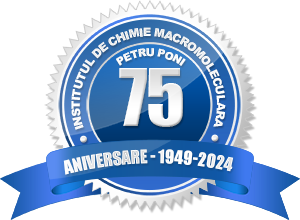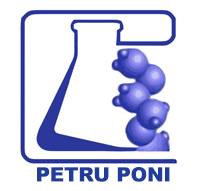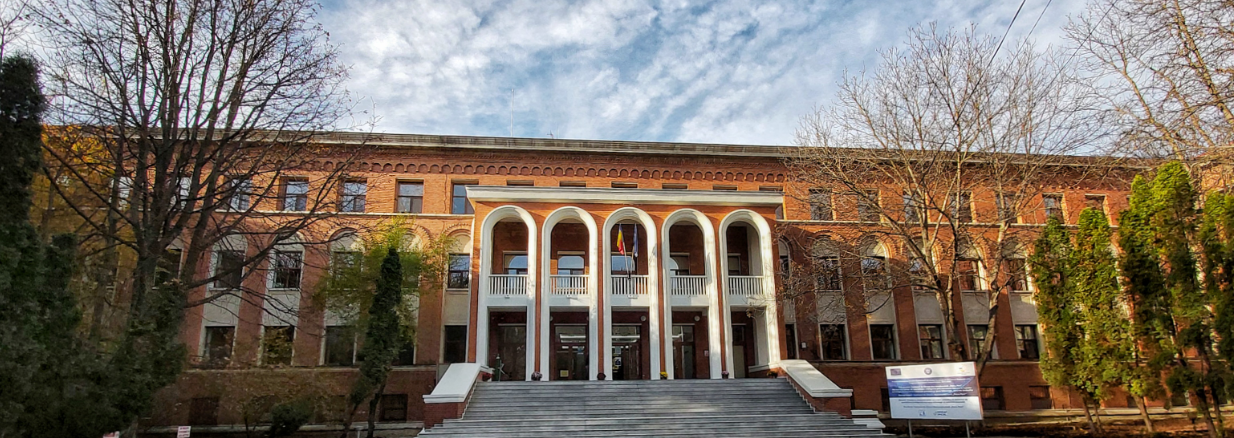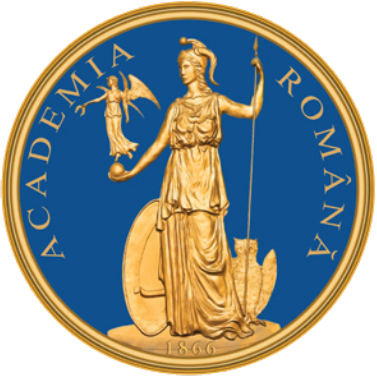| Proiect: Laboratory of Supramolecular Chemistry for Adaptive Delivery Systems ERA Chair Initiative
|
Project: Horizon 2020 WIDESPREAD 2-2014: ERA Chairs, no: 667387
Acronym: SupraChem Lab
Project coordinator: Dr. Mariana PINTEALA / Project manager: Dr. Teodora RUSU
Duration: 2015 - 2020
Considering the “P Poni” Institute of Macromolecular Chemistry (PPIMC) development strategy and also the research challenges in the Romanian Smart Specialisation Strategy as well as the Horizon 2020 objectives it is vital to set up an optimal research team for the IntelCentre able to improve the excellence of the centre within PPIMC and in the European research and innovation landscape. It is very important to adjust the level of research carried out in the IntelCentre to the level of leading international laboratories and to position the Centre as forefront of Romanian research in this area.
The strategic objective of the SupraChem Lab Project is to unlock and foster excellent research in PPIMC IntelCentre by setting up a strong research group in the field of hybrid materials for adaptive self-organized supramolecular structures.
http://www.intelcentru.ro/suprachem_lab |
|
| Proiect: Mobility projects for experienced diaspora researchers
|
Project: PN-III-P1-1.1-MCD-2017-0068
Project coordinator: Dr. Teodora RUSU
Duration: 2016 |
|
| Proiect: Actiune suport de premiere a proiectului Orizont 2020 WIDESPREAD 2-2014 ERA CHAIR GA nr. 667387
|
Proiect: PN-III-P3-3.6-H2020-2016-0011
Acronym: SupraChem Lab - Suport
Project coordinator: Dr. Teodora RUSU
Duration: 2016 – 2020
Proiectul SupraChem Lab – Suport de premiere al participarii in Programul Orizont 2020 vine in completarea finantarii Europene pentru proiectul WIDESPREAD 2-2014: ERA CHAIR, nr. 667387: SupraChem Lab - Laboratory of Supramolecular Chemistry for Adaptive Delivery Systems ERA Chair initiative.
http://www.intelcentru.ro/suprachem_lab/PNIII/
|
|
| Proiect: Mimicking living matter mechanisms by five-dimensional chemistry
|
Project: PN-III-P4-ID-PCCF-2016-0050
Acronym: 5D-nanoP
Project coordinator: Prof. Aatto LAAKSONEN
Duration: 2018 – 2022
Mimicking of the living matter mechanism of cooperation by complementarity represents one of the most challenging tasks of supramolecular chemistry. The momentary solution consists in using particularly designed molecular unimers, endowed with the necessary amount of chemical information.
The 5D-nanoP project is dedicated to interfacing the fundamental research area of constitutional dynamic chemistry with the practical approaches of medicinal chemistry and biomedical applications. In the spirit of a metaphor of Jean-Marie Lehn (Nobel Prize in Chemistry, 1987), the project aims to materialize the concept of 5D chemistry in designing, synthesizing, characterizing, and using molecules with conditional affinity, to build versatile supramolecular nanoplatforms able to vectorize compounds of pharmaceutical or biochemical relevance, all of them involved in physiologic and pathologic processes at cell- and tissue-level.
http://www.intelcentru.ro/5D-nanoP/ |
|
| Proiect: Wood and Derivatives Protection by Novel Bio-Coating Solutions
|
Project: ERA-IB-16-040
Acronym: ProWood
Director partner PPIMC: Dr. Teodora RUSU
Duration: 2017 – 2020
The project ProWood (Protection of Wood) is an interdisciplinary 6-members Consortium of molecular biologists, (bio)chemical engineers and industrial partners selected for their know-how in biotechnology, bio-coating development, wood handling and validation processes. ProWood aims the development of novel solution(s) for wood decay protection under the light of the previous and successful developments and knowledge of the Partners. Thus, the combination of bio-based coating solutions with biological decay antagonists guarantees an industrial-relevant solution.
http://www.intelcentru.ro/prowood/ |
|
| Proiect: Dynamic Constitutional Platforms for Targeted Drug Delivery
|
Project: PN-III-P1-1.1-TE-2016-1180
Acronym: DynaCoPlat
Project coordinator: Dr. Lilia CLIMA
Duration: 2018 – 2020
The next level in Drug Discovery is the easy building and self-generation of multifunctional nanostructures from commercially available or “easy to prepare” units, which will further self-assemble in a complex, tunable and multifunctional materials, suitable for very specific targeted drug delivery. In this regard, DynaCoPlat project’s main objective is to create dynamic nanoplatforms for developing dynamic systems for enhanced multivalent biorecognition with applications in targeted drug delivery. Project’s subject “the development of efficient nucleic acid targeted delivery systems” addresses the thematic priorities of the National Development Plan 2014-2020 programs (PN III) and Horizon 2020 strategy. The project will adopt modern synthetic pathways for preparing dynamic nanoplatforms with self-assembly properties based on dynamic chemistry and combinatorial methodology. The simplicity of the synthetic constitutional strategy using accessible and simple building blocks for facile self-generated nanoplatforms, presenting synergistic DNA and cell membrane affinities, can be considered as a valuable path toward the systematic discovery of active delivery systems. An important issue we aim to address is establishing a methodology for labelling of nanoplatforms with targeting molecules and achieve successful targeting property via introduction of selective cellular markers, thus increasing the efficacy and reducing the overall toxicity of therapeutic agents. On the other side, the STRATEGIC OBJECTIVE of DynaCoPlat project is the formation and consolidation of a young multidisciplinary team of researchers with complementary knowledge and experience, able to increase their scientific visibility and integration into scientific environment by publishing the results in high impact journals and application to competitions within the national and European Framework (H2020, Era-Net, Euronanomed, etc.).
http://www.intelcentru.ro/DynaCoPlat/home |
|
| Proiect: Antitumoral Theranostic Platforms Based nn Carbon Dots and Polymer Matrices
|
Project: PN-III-P1-1.2-PCCDI-2017-0083
Acronym: TERADOT
Director partner PPIMC: Dr. Mariana PINTEALA
Duration: 2018 – 2020
The TERADOT consortium will implement this project with the aim of reaching its strategic objective: the consolidation of the consortium scientific and technical competencies (in particular those of the P3 partner with relaunch potential) in the field of econanotechnologies and advanced materials by supporting/ developing the existing research competences and the transferability of its research results. The TERADOT Consortium is an alliance that will devote its efforts to capitalize the potential of nanotechnologies by creating new teranostic platforms based on Carbon Dots (CDs) in order to radically change the proceedings to diagnose and treat cancer.
http://www.ch.tuiasi.ro/cercetare/proiecte/TERADOT/ |
|
| Proiect: Intelligent therapies for non-communicable diseases based on controlled release of pharmacological compounds from encapsulated engineered cells and targeted bionanoparticles
|
Project: PN-III-P1-1.2-PCCDI-2017-0697
Acronym: INTERA
Project Component 4 (PC4) coordinator: Dr. Mariana PINTEALA
PC4: Polymeric conjugates for efficient induction of expression of genes of interest with applicability in cell therapy
Duration: 2018 – 2020
The complex project INTERA aims to develop innovative therapeutic methods to ameliorate the pathological progression by reducing the inflammatory process. The multidisciplinary studies proposed by INTERA can create and define new nano- or micro-medical devices usable for smart and innovative anti-inflammatory therapies. INTERA includes 4 projects: (1) Encapsulation of genetically manipulated eukaryotic cells for controlled release of pharmacologically active products; (2) Development of a 3D platform designed for pre-clinical drug testing composed of cells incorporated into three-dimensional bio-matrices; (3) Intelligent nanobioparticles designed for specific targeting of bioactive compounds to pathological sites to reduce (treat) vascular inflammation. (4) Polymeric conjugates to induce efficiently the expression of genes of interest with applicability in cellular therapy.
http://www.icbp.ro/static/en/en-networking_grants-grants-national_grants/intera.html |
|
| Proiect: The Synthesis and Evaluation of some Tribenzotriquinacene-Flavonoids Tripodal Antibacterial Agents
|
Project: PN-III-P1-1.1-PD-2016-1117
Acronym: SEFTAA
Project coordinator:: Dr. Lucian BAHRIN
Duration: 2018 – 2020
Since their discovery, the overuse of antibiotics in both medicine and agriculture has paved the way to the emergence of drug resistant bacteria, which in turn gave rise to an ever-increasing demand for new, more effective antibiotics. Many of the recently developed drugs, however, were built on the same molecular scaffolds as older antibiotics, that various bacteria have developed resistance to. For instance, the second, third and fourth generation cefalosporins were each developed as microorganisms became resistant to the previous generation. The development of antibiotics based on new molecular scaffolds, that are able to bypass the various resistance mechanisms employed by drug resistant bacteria, is becoming more urgent with each passing day. Flavonoids are a diverse class of plant polyphenols that exhibit a wide range of biological activities. Amongst these, several flavonoids were found to display antibacterial properties. Moreover, flavonoids have also been shown to have a synergistic effect when administered with other antimicrobial agents against drug resistant bacteria. This makes flavonoids promising candidates in the ongoing search for new antibacterial drugs.
https://icmpp.ro/seftaa/ |
|
| Proiect: Satellite hybrid micro-thrusters
|
Project: STAR CDI No. 169/20.07.2017
Acronym: SATY
Director partner PPIMC: Dr. Lilia CLIMA
Duration: 2017 – 2019
The aim of this project is to improve the laser propulsion system following two directions: a) by enhancing the characteristics of the polymer target material (either by improving the synthesis method or by adding other dopants in the polymer structure); b) by using additional electric and magnetic fields (Hall effect configuration) to accelerate the ejected ions. Considering the large number of parameters that can be changed, we are confident that this study will have an important contribution to the development of technologies for space applications.
https://www.researchgate.net/project/Satellite-hybrid-micro-thrusters |
|
| Proiect: Functional DNA Nanostructures-Gold Nanoparticles for Targeted Gene Therapy Purposes
|
Project: PN-II-RU-TE-2014-4-1444
Acronym: DNAnanoGold
Project coordinator: Dr. Alexandru ROTARU
Duration: 2015 – 2017
The DNAnanoGold project (PN-II-RU-TE-2014-4-1444) is aiming at investigating the possibility of utilizing the 2D DNA nanostructures to create a functional nano-platform for biomedical applications. We expect to precisely attach specific modifications, including fluorophores, membrane penetrating proteins and gold nanoparticles to ensure the nanostructures functionality and selectivity.
https://rotarualexandru.wixsite.com/dnananogold |
|
| Proiect: Biologically Inspired Systems for Engineered Structural and Functional Entities
|
Project: PN-II-ID-PCCE-2011-2-0028
Project coordinator: Dr. Mariana PINTEALA
Duration: 2012 – 2015
The project aims to study, to develop and to preliminary test biomimetic structural and functional entities, able to act as gene transfection vehicles of non-viral type, and having a DNA packaging capacity of about 2 ÷ 5 kilobases. The main features of these entities are: (i) the general structure of a polyplex, (ii) the functionality of a cargo-complex that chemomimic the histones, morphomimic the nucleosome and biomimic a virus like gene vector, (iii) the ability to include or to reversibly bind and transport (bio)chemical species necessary to assist the DNA vehiculation and trafficking, (iv) are based on fullerene-rich polymers and / or dendrimers, (v) the capacity to associate to artificial extracellular matrices, in order to generate gene delivery systems with transfection ability, for ex vivo applications. The developed entities will represent effective tools in genetic and tissue engineering, useful in health restoration, life quality enhancement, and to cure tissue and human organism deficiencies. The envisioned engineering strategy to build biomimetic entities may sustain a spin-off type transfer of knowledge towards hi-tech application areas, with a clear echo in clinics and, finally, in human health. The project involves seven complementary teams hosted by four research and academic institutions. In equilibrated ratios, senior, young and junior researchers will collaborate inside the project frame.
http://www.intelcentru.ro/Biomimetics_PCCE/ |
|
| Proiect: Bionanoconjugates Formation by Laser Ablation in Liquid
|
Project: PN-II-RU-TE-2011-3-0174
Acronym: BioNP
Project coordinator: Dr. Claudia MIHESAN
Duration: 2011 – 2014
The main objective of this project is to elaborate and characterize a new method of producing bionanoconjugates, based on laser ablation of a metal or metal oxide immersed in solution of biomolecules. The ablation occurs as a result of the interaction between a laser beam and a solid target and represents the passing of a portion of the irradiated volume in the gas phase (ablation plume) in the form of atoms, ions, molecules, fragments, molecular aggregates, micro droplets, etc., depending on target and laser parameters (wavelength, energy, etc.). The material ablated in liquid will agglomerate and form nanoparticles. The surface of the nanoparticles is activated, allowing the interaction with the capping species present in the solution, which will prevent further aggregation, possible for uncoated nanoparticles.
http://www.intelcentru.ro/BioNP/ |
|
| Proiect: Hyperthermic Magnetic Nanoparticle Ablation of Liver and Pancreatic Tumors
|
Project: PN-II-PT-PCCA-2011-3.1-0252
Acronym: Nanoablation
Director partner PPIMC: Dr. Adrian FIFERE
Duration: 2012 – 2015
The major aims of this project were to enhance the thermal ablation procedures in liver and pancreatic tumors through the use of computer-controlled radio-frequency ablation
(RFA) needle, as well as to develop methods for targeted intratumoral magnetic nanoparticles (MNPs) delivery and induction of tumor hyperthermia
http://www.umfcv.ro/nanoablation |
|
| Proiect: New porous coordinating polymers with variable dimensions organic ligands for gas storage
|
Project: POC E; P_37_707/31.08.2016
Acronym: POCPOLIG
Project coordinator: Dr. Vasile LOZAN / Project manager: Dr. Narcisa Laura MARANGOCI
Duration: 2016 - 2020
The objective of the project is to increase the capacity and quality of the research and innovation development activity by attracting specialists with advanced skills, opening a new research direction in the field of metal-organic networks (MOF) and diversifying the range of research services and transferring them to industrial partners, in order to stimulate the competitiveness of the Romanian scientific research at European level and of the national/regional economic competitiveness of the Institute and of the economic actors in the field of intelligent specialization of eco-nano-technologies and advanced materials.
http://pocpolig.icmpp.ro/ |
|
| Proiect: Institutul de Chimie Macromoleculara "Petru Poni" - Pol interdisciplinar de specializare inteligenta prin cercetare-inovare si transfer tehnologic in (bio/nano)materiale polimere si (eco)tehnologii
|
Project: POC F; 142/10.10.2016
Acronym: InoMatPol
Project coordinator: Dr. Narcisa Laura MARANGOCI
Duration: 2016 - 2019
Obiectivul general al proiectului InoMatPol consta in cresterea capacitatii, calitatii si eficientei activitatii CDI din ICMPP prin deschiderea de noi directii de cercetare si diversificarea gamei de servicii de cercetare orientate in special catre industrie – conform cerintelor de inovare ale agentilor economici din cadrul structurilor de tip cluster, in scopul stimularii competitivitatii cercetarii stintifice romanesti la nivel european si a competitivitatii economice nationale/regionale ale Institutului si ale actorilor economici in domeniul de specializare inteligenta eco-nano-tehnologii si materiale avansate.
http://http://inomatpol.icmpp.ro/ |
|
| Proiect: Formulation of bio-absorbable class III medical device for local drug delivery
|
Project: Research agreement no. 5289/09.08.2019 – CORTHOTEC LIMITED, London, UK
Acronym: CORTHOTEC
Project coordinator: Dr. Mariana PINTEALA
Duration: 2019 – 2020 |
|
| Proiect: Mobility projects for researchers
|
Project: PN-III-P1-1.1-MC-2019-1059
Project coordinator: Dr. Irina ROSCA
Duration: 2019 |
|
| Proiect: Mobility projects for experienced diaspora researchers
|
Project: PN-III-P1-1.1-MCD-2019-0117
Project coordinator: Dr. Adina COROABA
Duration: 2019 |
|
| Proiect: Mobility projects for researchers
|
Project: PN-III-P1-1.1-MC-2019-0219
Project coordinator: Dr. Liliana ROSU
Duration: 2019 |
|
| Proiect: Multifunctional Dynamic Nanoplatforms for Targeted Biomedical Applications
|
Project: PN-III-P3-3.1-PM-RO-BE
Project coordinator: Dr. Lilia CLIMA
Duration: 2018 |
|
| Proiect: Analysis methods for characterization of oligo / polypeptides and polysaccharides applied in the cosmetics and food industry: proposal, development and validation
|
Project: PN-III-P2-2.1-BG-2016-0175
Acronym: AnaMet
Director partner PPIMC: Dr. Sorin-Alexandru IBANESCU
Duration: 2016 – 2018
The aim of the project - the development of new cosmetic and nutritional products, improvement and optimization of the existing technologies through the transfer of knowledge in the field of physico-chemical analysis techniques using modern equipment purchased by the company SANIMED International SRL (SANIMED) in the last three years and existing expertise in Faculty of Chemical Engineering and Environmental Protection of the „Gheorghe Asachi” Technical University from Iasi as well as within the "Petru Poni" Institute of Macromolecular Chemistry Iasi.
https://icpm.tuiasi.ro/pdf/cercetare/proiecte/anamet2016.pdf |
|
| Proiect: Bilateral projects with the Republic of Moldova
In vitro / in vivo synthesis and evaluation of new conjugates with antimicrobial activity
|
Project: 26BM/16.09.2016
Acronym: CICLOMED
Project coordinator: Dr. Narcisa Laura MARANGOCI
Duration: 2016 – 2018 |
|
| Proiect: Mobility projects for researchers
|
Project: PN-III-P1-1.1-MC-2018-0726
Project coordinator: Dr. Irina ROSCA
Duration: 2018 |
|
| Proiect: Mobility projects for researchers
|
Project: PN-III-P1-1.1-MC-2017-2094
Project coordinator: Dr. Irina ROSCA
Duration: 2018 |
|
| Proiect: Mobility projects for researchers
|
Project: PN-III-P1-1.1-MC-2018-2106
Project coordinator: Dr. Dana BEJAN
Duration: 2018 |
|
| Proiect: Mobility projects for researchers
|
Project: PN-III-P1-1.1-MC-2017-2031
Project coordinator: Dr. Adina ARVINTE
Duration: 2018 |
|
| Proiect: Mobility projects for researchers
|
Project: PN-III-P1-1.1-MC-2018-0684
Project coordinator: Dr. Teodora RUSU
Duration: 2018 |
|
| Proiect: “Brancusi†bilateral project with France
Synthesis and functionalization of magnetic particles for enzymes separation
|
Project: 787/30.06.2014
Project coordinator: Dr. Mariana PINTEALA
Duration: 2015-2017 |
|
| Proiect: Innovative system of products and technologies designed to stimulate the growth of eco-efficiency of the leather industry
|
Project: PN-II-PT-PCCA-2013-4-0436
Director partner PPIMC: Dr. Dan ROSU
Duration: 2014-2017 |
|
| Proiect: Mobility projects for experienced diaspora researchers
|
Project: PN-III-P1-1.1-MCD-2017-0068
Project coordinator: Dr. Teodora RUSU
Duration: 2017 |
|
| Proiect: Advanced research related to the behavior of multicomponent polymer systems under simulated environmental factors action
|
Project: PN-II-ID-PCE-2011-3-0187
Project coordinator: Dr. Dan ROSU
Duration: 2011-2016
The present research project is focused on the transformations of polymers with different structures under weathering conditions and especially solar light.
The following objectives were taken into consideration:
- Immobilisation of dyes of different structures and concentrations onto natural and/or synthetic polymers
- Obtainment of multi-component systems containing polysaccharides
- Obtainment of semi-interpenetrating networks based on collagen or polyaspartic acid
- Study of the influence of controlled environmental factors upon polymer systems colored with dyes (solar light, heat, humidity)
- Study of the stability of the multi-component systems to weathering conditions
https://icmpp.ro/mcps/index.php |
|








